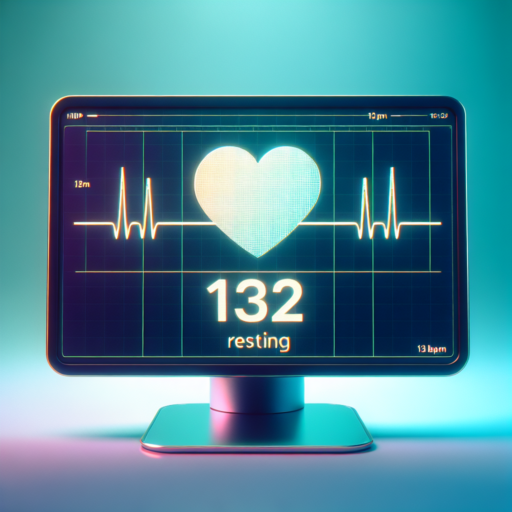Understanding HRV: What It Means for Different Age Groups
Understanding Heart Rate Variability (HRV) and its implications for different age groups is essential for a comprehensive approach to health and wellness. HRV, the variation in time between each heartbeat, is a critical indicator of the autonomic nervous system’s function and overall heart health. Its significance can vary widely across different age brackets, offering key insights into an individual’s stress levels, fitness, and even potential health risks.
HRV in Young Adults
For young adults, HRV often reflects a robust autonomic system and good resilience to stress. High HRV in young individuals is usually a sign of a healthy, adaptable heart, capable of efficiently managing stressors and recovering from physical exertion. Studies suggest that engaging in regular physical activity can enhance HRV, thereby fortifying the body’s response to stress and improving cardiovascular health.
HRV in Middle-Aged Adults
Middle-aged adults might experience a natural decline in HRV due to the aging process and increased stress levels. This demographic is often juggling more responsibilities, which can lead to heightened stress and subsequently impact heart health. It’s crucial for individuals in this age group to monitor their HRV and seek lifestyle changes or interventions that can help in maintaining an optimal HRV, such as mindfulness practices, regular exercise, and adequate sleep.
HRV in Seniors
For seniors, a decline in HRV is expected as part of the aging process. However, maintaining a level of physical activity and stress management can help in preserving HRV levels. Seniors with higher HRV may have better cardiovascular health and resilience against stress and illnesses. It is important for individuals in this age group to adopt heart-friendly practices and possibly incorporate guided exercises designed to improve HRV and overall wellness.
How HRV Levels Naturally Change As You Age
Understanding the evolution of Heart Rate Variability (HRV) levels as we age is crucial for everyone, from athletes to health enthusiasts, looking to optimize their well-being. HRV, a measure of the variation in time between each heartbeat, is often considered a key indicator of autonomic nervous system function and overall heart health. Interestingly, the way HRV levels change over the years is not linear, indicating the complexity of our physiological processes.
During the early stages of life, individuals tend to exhibit higher HRV levels. These higher levels are associated with a flexible and resilient cardiovascular system, capable of adapting quickly to stress, changes in environment, and physical demands. As we transition from childhood into adulthood, our HRV levels begin to gradually decline. This decline is a natural consequence of aging and is influenced by factors such as physical activity levels, stress, and lifestyle choices.
In later years, the rate of HRV decline can provide insights into one’s overall health and longevity. Studies suggest that a slower rate of decline in HRV is linked with better cardiovascular and autonomic health. Consequently, maintaining or even improving HRV levels through regular physical activity, stress management, and a balanced diet becomes increasingly important with age. These lifestyle interventions can aid in preserving autonomic function and potentially mitigating the natural age-related decline in HRV.
Optimal HRV Levels by Age: A Comprehensive Guide
Understanding the optimal Heart Rate Variability (HRV) levels for different age groups is crucial for assessing cardiovascular health, stress levels, and overall fitness. HRV, the variation in time between consecutive heartbeats, is influenced by a variety of factors, including age. This variance can provide deep insights into the autonomic nervous system (ANS) and its balance between the sympathetic and parasympathetic nervous systems.
HRV Trends Across Different Age Groups
Typically, HRV tends to decrease as individuals age. This pattern reflects changes in the autonomic function and a gradual decline in the adaptability of the heart to stress. Research suggests that children and teenagers often exhibit higher HRV levels, indicative of a more resilient and flexible cardiovascular system. As individuals transition into adulthood and further into middle age, HRV levels tend to decrease, signaling a natural age-related decline in autonomic function.
Factors Influencing HRV in Various Age Groups
Several factors affect HRV levels across different ages, including lifestyle choices, physical activity, stress levels, and pre-existing health conditions. For instance, a sedentary lifestyle can lead to lower HRV levels, whereas regular physical activity tends to increase HRV, indicating better cardiovascular health and stress management capabilities. It’s also important to note that psychological stress and anxiety can significantly lower HRV levels, making it a crucial parameter to monitor for maintaining a balanced and healthy life.
To accurately assess one’s HRV and its implications on health, it is essential to consider these age-related norms and influences. By understanding and monitoring HRV levels, individuals can better gauge their cardiovascular and autonomic health, tailor their lifestyle choices, and potentially prevent future health issues related to autonomic dysfunction or cardiovascular diseases.
The Impact of Age on Heart Rate Variability: What You Need to Know
Understanding how age affects heart rate variability (HRV) is crucial for anyone interested in maintaining cardiovascular health. HRV refers to the variation in the time interval between heartbeats, and it’s a vital marker of the autonomic nervous system’s function and overall heart health. As we age, our body undergoes various physiological changes that can significantly influence HRv levels.
Age-related decline in HRV: Studies have consistently shown that HRV tends to decrease with age. This decline is believed to be due to a combination of factors, including reduced physical fitness, changes in the autonomic nervous system, and the increased likelihood of developing cardiovascular diseases. Such a decrease in HRV may reflect alterations in the balance between the sympathetic and parasympathetic nervous systems, with reduced parasympathetic (vagal) activity often observed in older adults.
Despite the general trend towards decreased HRV with age, it’s important to note that lifestyle factors such as regular physical activity, stress management, and a healthy diet can play a significant role in mitigating this decline. Indeed, research indicates that older adults who remain physically active and manage stress effectively may maintain higher levels of HRV, akin to those of younger individuals.
No se han encontrado productos.
Age-Related HRV Trends: Insights from Recent Studies
Understanding how Heart Rate Variability (HRV) changes with age is crucial for assessing cardiovascular health and overall well-being. Recent research provides insightful data into how HRV trends alter as we progress through different life stages. These studies enlighten healthcare professionals and individuals alike on the importance of monitoring HRV to maintain optimal health.
One significant finding from these studies is the recognition of a gradual decline in HRV as individuals age. This trend indicates that the autonomic nervous system’s ability to regulate heart rate diminishes over time. Younger populations typically exhibit higher HRV, signifying robust cardiovascular flexibility and resilience. However, as age increases, a lower HRV becomes more common, which is associated with various health risks such as cardiovascular diseases and reduced stress resilience.
Moreover, the impact of lifestyle factors on age-related HRV trends highlights the potential for intervention. Regular physical activity, a balanced diet, and stress management practices have been found to positively influence HRV, regardless of age. These findings suggest that adopting healthy habits can mitigate some of the adverse effects of aging on HRV, offering a proactive approach to maintaining cardiovascular health.
Maximizing Your HRV at Any Age: Tips and Tricks
Understanding and improving your Heart Rate Variability (HRV) is a vital aspect of maintaining overall cardiovascular health. HRV refers to the variation in time intervals between heartbeats, and a higher HRV is often linked with better physical and emotional well-being. Irrespective of your age, there are actionable strategies you can employ to enhance your HRV, thereby contributing to a healthier heart and body.
Engage in Regular Physical Activity
One of the most effective methods to boost your HRV is through regular, consistent exercise. Physical activity, especially aerobic exercises like walking, cycling, and swimming, can significantly improve heart health and increase HRV levels over time. It’s essential to find a balance, however; while moderate exercise can enhance HRV, excessive high-intensity workouts without adequate recovery might lead to the opposite effect. Incorporating activities that you enjoy into your routine can make this practice more sustainable and enjoyable.
Focus on Quality Sleep
Another critical factor in maximizing your HRV is ensuring you get enough quality sleep. Sleep is when your body recovers and heals, and a lack of it can lead to increased stress hormones in the body, which adversely affect your HRV. Establishing a regular sleep schedule, creating a restful bedtime routine, and minimizing exposure to blue light from screens before bed can all contribute to better sleep quality. Moreover, using techniques such as mindfulness or relaxation exercises before bedtime can further improve your sleep and, as a result, your HRV.
Maintain a Balanced Diet
Nutrition plays a crucial role in heart health and HRV. Consuming a diet rich in omega-3 fatty acids, antioxidants, and fiber can help fight inflammation in the body and improve overall cardiovascular well-being. Incorporating a variety of fruits, vegetables, lean proteins, and whole grains into your meals can provide your heart with the nutrients it needs to function optimally. Additionally, staying hydrated and limiting intake of processed foods and sugars can support better HRV levels and contribute to a healthier lifestyle.
Comparing HRV Levels: Children, Adults, and Seniors
Understanding Heart Rate Variability (HRV) levels across different age groups can offer invaluable insights into cardiovascular health and overall wellness. The metric speaks volumes about the autonomic nervous system’s role, particularly in modulating heart rate in response to stress, relaxation, and exercise. By comparing HRV levels among children, adults, and seniors, we can unravel the intricacies of how age impacts heart rhythm patterns.
HRV Trends in Children
Children tend to exhibit higher HRV levels, indicating a robust and dynamic autonomic nervous system. This heightened variability in heart rate reflects their bodies’ adaptability to environmental stressors and challenges. The resilience of young hearts suggests optimal cardiovascular function, but it also underscores the importance of fostering healthy habits early on to maintain high HRV levels into adulthood.
Shifts in HRV as Adults
Transitioning into adulthood, HRV levels can begin to fluctuate more significantly. Lifestyle factors such as physical activity, stress management, and diet play a crucial role in determining an individual’s HRV. Typically, adults leading a balanced lifestyle with regular exercise and low stress will maintain healthier HRV scores. However, the emergence of chronic health conditions can impact these levels, making it crucial to monitor HRV as part of an adult’s health assessment.
HRV Considerations for Seniors
Seniors often experience a natural decline in HRV, a reflection of the aging autonomic nervous system and potential cumulative health issues. Low HRV levels in seniors can be associated with increased risks of cardiovascular diseases and reduced resilience to stress. It’s essential for seniors to engage in activities that can help sustain autonomic function, such as moderate exercise, stress management techniques, and maintaining a healthy diet. The goal is to support a baseline of heart rate variability that can contribute to longevity and quality of life.
Understanding the Role of Fitness in HRV Levels Across Age Groups
Heart Rate Variability (HRV) is a crucial indicator of the autonomic nervous system’s health and overall well-being. Research has consistently shown that an individual’s fitness level can have a significant impact on HRV, but the effects vary across different age groups. This variation underscores the importance of a tailored fitness regimen that takes into consideration not just the goal of improving HRV but also the age-specific physiological responses to exercise.
The Impact of Fitness on HRV in Young Adults
Young adults typically exhibit a high level of plasticity in HRV response to physical fitness. Regular aerobic exercises, such as running or swimming, are known to enhance HRV by improving the balance between the sympathetic and parasympathetic nervous systems. This balance is crucial for stress resilience, recovery, and overall cardiovascular health. Studies highlight that the improvements in HRV seen in this age group can set a foundation for long-term heart health, illustrating the early adoption of a fitness regimen as a preventive measure.
The Role of Fitness in Maintaining HRV Among Middle-aged Adults
As individuals approach middle age, changes in HRV are more closely associated with the prevention of cardiovascular diseases. Fitness programs tailored for strength and flexibility, in addition to aerobic capacity, become essential. The focus shifts slightly from improving HRV directly to maintaining it and preventing decline. Regular physical activity at moderate intensity can help mitigate the natural decline in HRV that comes with aging, promoting better health outcomes and enhancing longevity.
Across different age groups, the relationship between fitness and HRV is a complex interplay that requires a nuanced understanding. While the benefits of fitness on HRV are evident, the impact varies, underscoring the importance of age-appropriate fitness interventions. Recognizing this can help individuals and healthcare providers better tailor fitness recommendations to maximize the positive effects on HRV and overall health.
The Relationship Between Stress, Age, and HRV: An In-depth Look
Understanding the intricate connection between stress, age, and Heart Rate Variability (HRV) offers a comprehensive insight into our well-being and health. As individuals age, the capacity of the body to handle stress tends to diminish, which is evidenced by variations in the HRV. This measure of the time interval between heartbeats is not just a critical indicator of cardiac health but also a mirror reflecting the body’s resilience to stress. A high HRV signifies a strong autonomic nervous system and a body well-equipped to manage stress, whereas a low HRV points to stress, potential health risks, and, often, the advanced effects of aging.
Role of HRV in Aging and Stress Adaptation: As we delve deeper into the aging process, it becomes apparent that HRV is a potent marker for gauging how well an individual can adapt to stressors. Age-related decline in HRV indicates a reduction in the body’s adaptive capacity, making it more susceptible to stress and related ailments. This decline in adaptability can affect one’s quality of life, emphasizing the importance of interventions aimed at improving HRV. Techniques such as mindfulness, regular physical activity, and stress management practices have shown promising results in enhancing HRV, thereby padding the body’s defenses against the inevitable impacts of aging and stress.
Understanding Stress’s Impact on HRV Across Different Ages
The interplay between stress and HRV varies considerably across different life stages. For young adults, the body’s resilience to stress tends to be higher, often reflected through a more variable HRV. In contrast, older adults show a decreased HRV, highlighting a diminished autonomic function and a higher vulnerability to stress. Chronic stress exposure, irrespective of age, can lead to a substantial reduction in HRV, underlining the crucial role of effective stress management strategies throughout life. Recognizing the importance of maintaining a high HRV can motivate individuals across age groups to adopt healthier lifestyles, ultimately fostering a better stress response and a lowered risk of stress-induced health issues.
HRV Tracking: Essential Tools and Apps for Every Age
Heart rate variability (HRV) tracking is becoming increasingly popular among health enthusiasts and professionals alike. It’s a powerful indicator of autonomic nervous system balance and stress levels in the body. With the right tools and apps, individuals of every age can easily monitor their HRV to make informed decisions about their health, wellness, and training optimization. Whether you’re a seasoned athlete, a fitness newbie, or simply looking to improve your overall well-being, understanding and tracking your HRV can be a game-changer.
Choosing the Right HRV Tracking Tool is crucial for obtaining accurate and useful data. The market is flooded with various gadgets and applications, each promising to offer the best in HRV monitoring. However, selecting a tool that suits your specific needs, lifestyle, and budget is essential. From wearable devices like smartwatches and fitness trackers to standalone applications that work with chest strap monitors, the options are vast. Look for devices and apps that offer detailed analytics, ease of use, and integration with other health tracking tools to get a holistic view of your wellness.
Popular HRV Tracking Devices and Apps
- Wearable Fitness Trackers: Many smartwatches and fitness bands come equipped with HRV tracking capabilities. They offer the convenience of continuous monitoring without the need for additional equipment.
- Specialized HRV Apps: Standalone apps designed specifically for HRV tracking can provide more detailed insights and tailored advice. These apps often require the use of an external heart rate monitor or chest strap for accurate readings.
- Heart Rate Monitors with HRV Functionality: For those seeking precision, heart rate monitors that include HRV metrics offer the highest accuracy. They are ideal for athletes and individuals under stress or recovery management.
Implementing HRV tracking into your daily routine can empower you to make proactive health and wellness choices. By understanding the fluctuations in your HRV, you can better manage stress, optimize your training, and improve your overall quality of life. Remember, consistency is key when it comes to HRV tracking; regular monitoring can provide the insights needed to tailor your lifestyle for peak physical and mental health.




